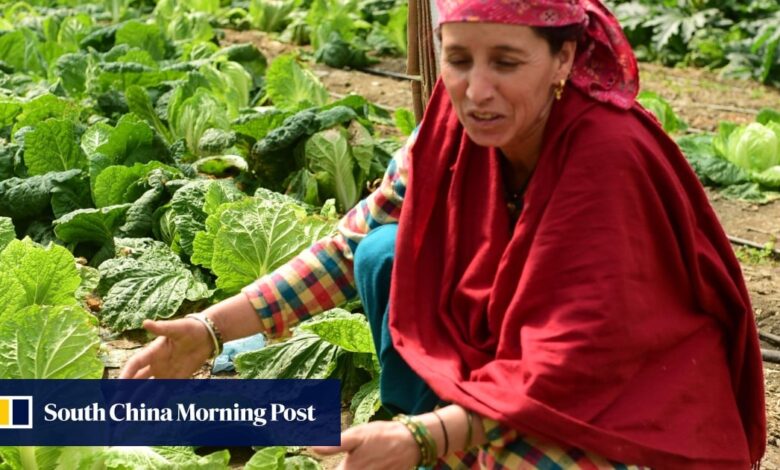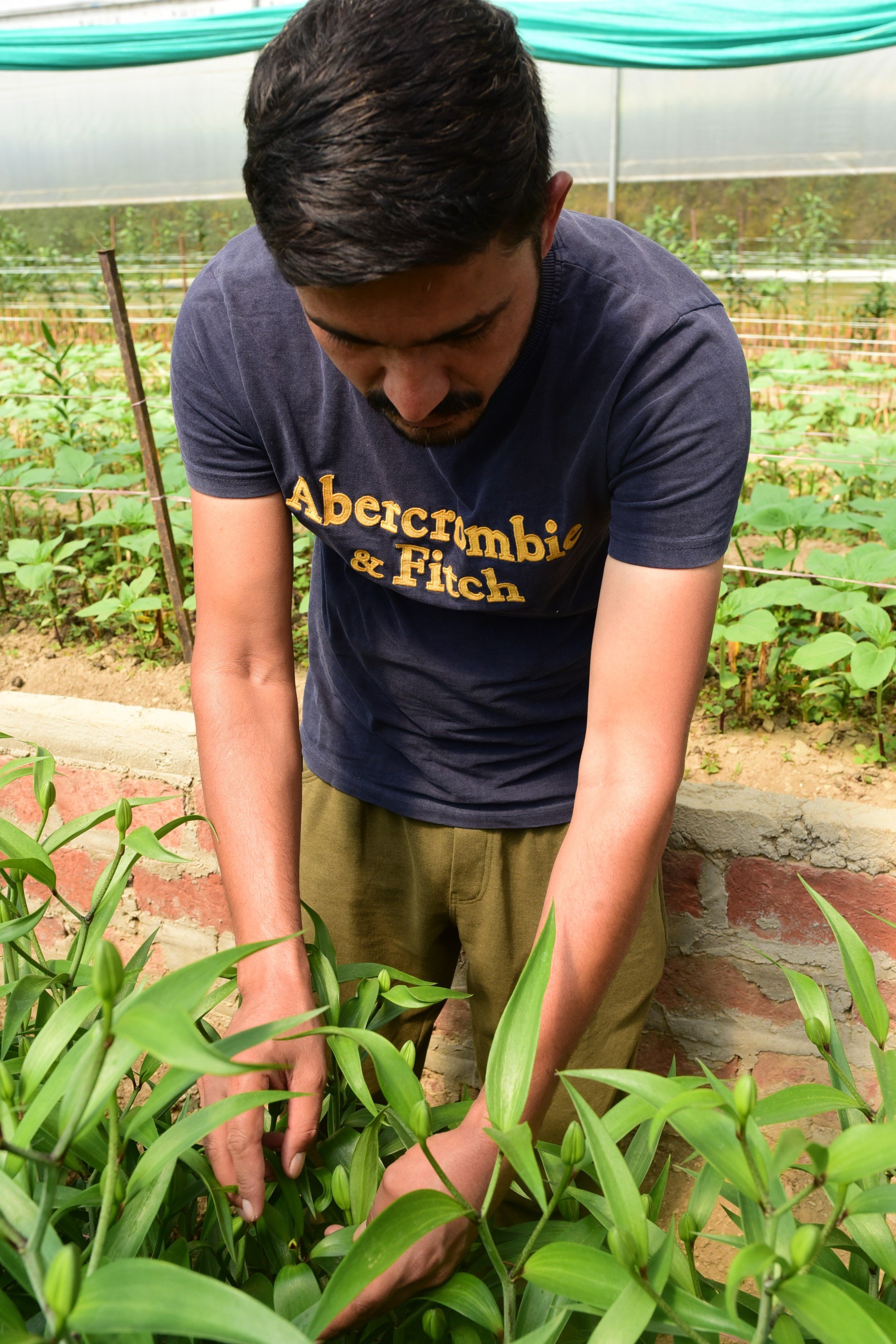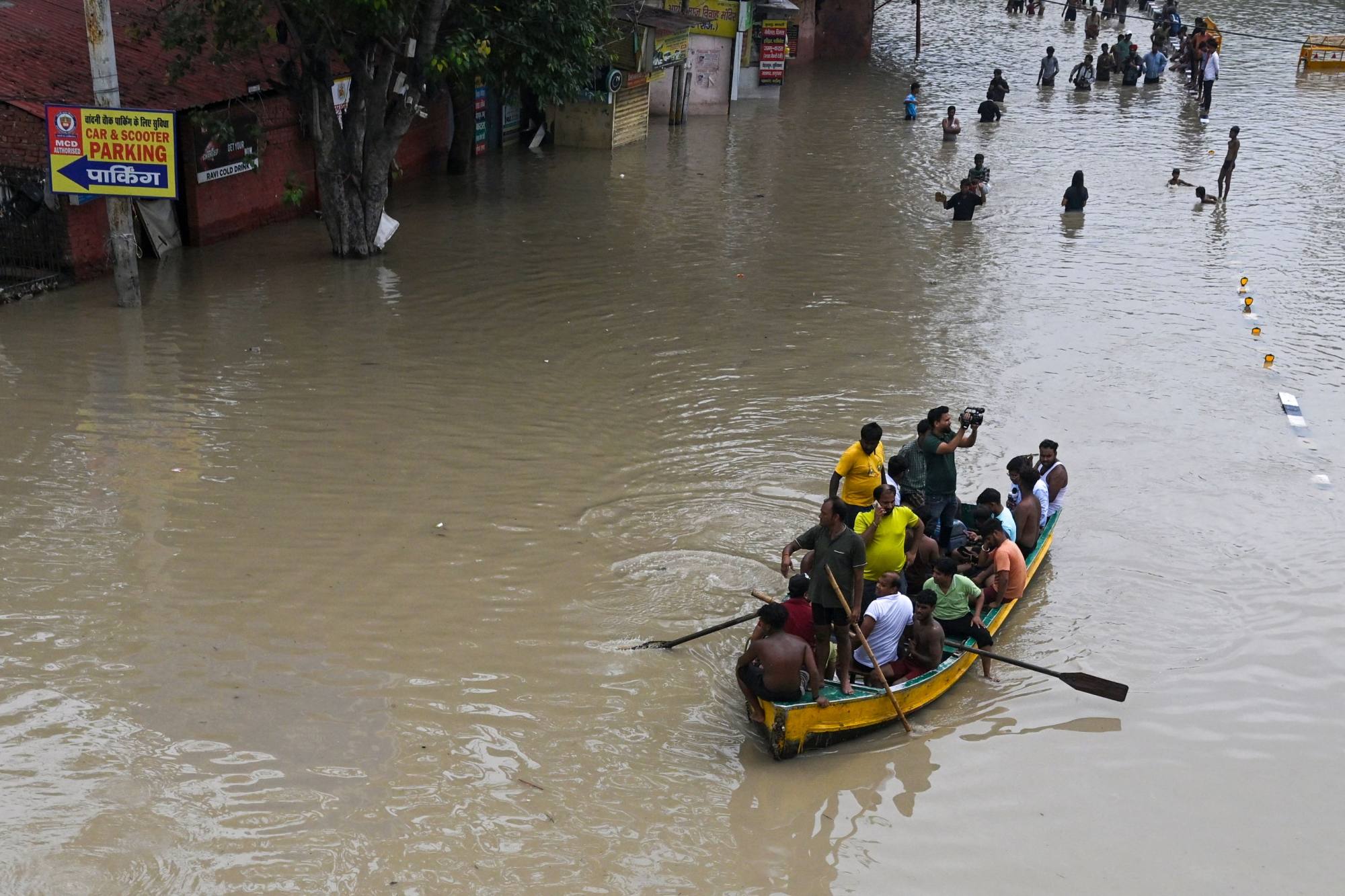The Himalayan farmers paying the price for climate change: ‘I’ve never seen this kind of weather’

[ad_1]
India’s June-September monsoon, which brings 70 per cent of the country’s rainfall, ended at a five-year low of 94 per cent of a long period average this season. But more worrying than the drop in volumes has been its erratic pattern.
After a sluggish start in June, rains rebounded above average in July, followed by one of the driest months in history in August. Unusually heavy showers in September wiped out a seasonal deficit, but hit the ripening crops close to harvest.
The intense burst of rain also caused landslides, flash floods and houses to collapse. In northeastern India, a glacial lake overflowed and burst through a dam this month. Forty people died and thousands were forced to flee their homes.
More than 100 people have been killed in Himachal Pradesh alone this year during the rainy season.
Scientists estimate that such erratic weather means South Asia could lose between 10 and 50 per cent of crop production by the end of the century due to global warming.
Farmers in Sekuri said a canopy of trees surrounding their lush village probably saved them from the brunt of disasters, but climate change is inevitably disrupting their age-old sustainable living.

Shattered by weather fluctuations
“Even in the peak of summer, the temperature would never rise above 25 degrees Celsius in our village. But this year, it rose to 35-40 degrees,” said Vipin Kumar, another farmer.
The weather’s impact has been so intense that even plants kept inside protective greenhouses have not been able to escape its fury. Pointing to some Chinese cabbages planted in rows, Kumar showed how the vegetable’s leaves had opened out instead of remaining packed together.
“We will have to throw these away. Nobody will pay anything,” he said, gesturing as well to another lot riddled by pests. Soaring costs of fertilisers and seed packets had further cut into his meagre income, he said.
Neighbouring farmer Baldev showed how the unseasonal weather had resulted in mottled green patches of a viral disease on some of his crop of yellow zucchinis.
“We normally get at least 100 boxes of vegetables from the summer season, but this year, we barely got 30,” he said.
Why a delay to South Asia’s monsoon is ‘bad news’ for global rice supplies
Why a delay to South Asia’s monsoon is ‘bad news’ for global rice supplies
Similarly, half of farmer Naresh Thakur’s tomato crop was washed away by the rain.
Three years ago, Thakur took on a job at a nearby hotel to support his fluctuating income, but he rued that the extreme weather disrupted even the tourist inflow as landslides choked off an arterial highway throughout the peak summer season.
The highway has only been partially cleared of rocks and boulders from the landslide, impeding the movement of farm goods, for which speedy deliveries are essential to ensure their freshness.
“We cut the flowers when they have half-bloomed because otherwise they start to wilt and droop by the time they reach wholesale markets in Delhi and Chandigarh [state capital of Punjab state]. They last no more than three days,” said Rajnish Thakur, whose family pioneered floriculture in the area.

Farmers cultivate carnations, chrysanthemums and other flower varieties inside greenhouses or in open fields. Timeliness is important because market prices can fluctuate as much as 1 rupee to 15 rupees for every stalk of flowers, depending on their availability during peak demand periods for festivals and weddings.
Rajnish Thakur said many of the flower buds prematurely dropped this season due to the temperature fluctuation.
Most farmers in the village say they have not earned anything from the summer crop and are living on their savings.
The vulnerability of their produce has also increased as greenhouse gas emissions have enhanced the air’s capacity to hold water, causing sudden bursts of heavy rainfall, scientists say. El Niño weather – which caused warming of the Pacific Ocean – exacerbated the impact this year.
Himalayan blunder
“The Himalayan range is one of the most vulnerable on Earth … [as] it is mostly a young mountain range and it is growing. What is happening with global warming is that we have even higher Himalayan warming because the topography is steep,” said Dr Farooq Alam, an associate professor at the Indian Institute of Technology, who has been conducting research on glaciers in Himachal Pradesh for 15 years.
Even the Paris Agreement that agreed to limit global warming to 1.5 degrees Celsius pre-industrial levels would result in a 2-2.1 degree rise in temperature in the Himalayas, he added.
Global warming is being felt more profoundly in the Himalayas Indus basin – comprising almost the whole of Pakistan and the Indian states of Himachal Pradesh, Punjab and Kashmir region (divided between India and Pakistan) – because around 40 per cent of the water in the river basin is dependent on glacier melt, he said.

“Monsoon rains, which contribute to the river system, are also affected by climate change,” he added. The effects are being compounded by construction of infrastructure such as roads and dams, resulting in cutting down of trees.
Alam said many of these underdeveloped provinces needed infrastructure for greater market access, but the impact of their development had to be carefully assessed by scientists before construction.
Farmers blamed their crop woes on the environmental destruction, with cliff sides being shorn of vegetation to make way for better road access.
“The problem is that trees are being cut and reforestation efforts are mostly a scam. Nobody bothers to nurture saplings beyond one year,” Kumar said.
“We prefer our simple way of living to taking up jobs. But these days we are barely able to meet the expenses because of fickle weather.”
[ad_2]
Source link






